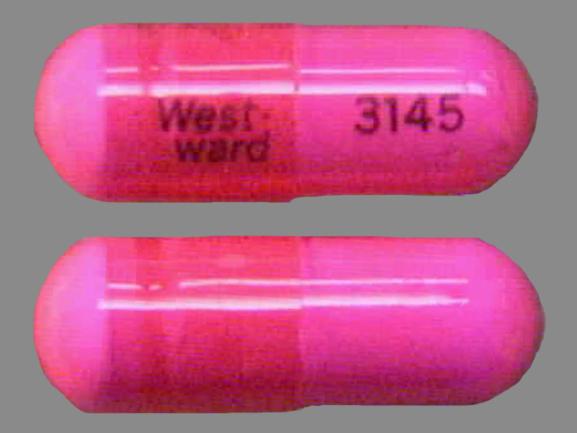Ephedrine Disease Interactions
There are 5 disease interactions with ephedrine.
Sympathomimetics (applies to ephedrine) cardiovascular disease
Major Potential Hazard, Moderate plausibility. Applicable conditions: Hyperthyroidism, Cerebrovascular Insufficiency, Pheochromocytoma
Sympathomimetic agents may cause adverse cardiovascular effects, particularly when used in high dosages and/or in susceptible patients. In cardiac tissues, these agents may produce positive chronotropic and inotropic effects via stimulation of beta- 1 adrenergic receptors. Cardiac output, oxygen consumption, and the work of the heart may be increased. In the peripheral vasculature, vasoconstriction may occur via stimulation of alpha-1 adrenergic receptors. Palpitations, tachycardia, arrhythmia, hypertension, reflex bradycardia, coronary occlusion, cerebral vasculitis, myocardial infarction, cardiac arrest, and death have been reported. Some of these agents, particularly ephedra alkaloids (ephedrine, ma huang, phenylpropanolamine), may also predispose patients to hemorrhagic and ischemic stroke. Therapy with sympathomimetic agents should generally be avoided or administered cautiously in patients with sensitivity to sympathomimetic amines, hyperthyroidism, or underlying cardiovascular or cerebrovascular disorders. These agents should not be used in patients with severe coronary artery disease or severe/uncontrolled hypertension.
Ephedrine (applies to ephedrine) BPH
Moderate Potential Hazard, Moderate plausibility. Applicable conditions: Urinary Tract Obstruction
Sympathomimetic agents such as ephedrine have the potential for producing clinically significant systemic effects, particularly during prolonged or indiscriminate use. In patients with prostate enlargement, urinary difficulty may develop or worsen due to smooth muscle contraction in the bladder neck via stimulation of alpha-1 adrenergic receptors. Therapy with ephedrine should be administered cautiously in patients with difficulty for urination due to hypertrophy or neoplasm of the prostate. It is important that the recommended dosages are not exceeded.
Ephedrine (applies to ephedrine) diabetes
Moderate Potential Hazard, Moderate plausibility. Applicable conditions: Diabetes Mellitus
Ephedrine may produce slight increases in blood glucose concentrations. Therapy with ephedrine should be administered cautiously in patients with diabetes mellitus. Closer monitoring of blood glucose concentrations may be appropriate. It is important that the recommended dosages of ephedrine are not exceeded.
Sympathomimetics (applies to ephedrine) BPH
Moderate Potential Hazard, Moderate plausibility. Applicable conditions: Benign Prostatic Hyperplasia, Prostate Tumor
Sympathomimetic agents may cause or worsen urinary difficulty in patients with prostate enlargement due to smooth muscle contraction in the bladder neck via stimulation of alpha-1 adrenergic receptors. Therapy with sympathomimetic agents should be administered cautiously in patients with hypertrophy or neoplasm of the prostate.
Sympathomimetics (applies to ephedrine) diabetes
Moderate Potential Hazard, Moderate plausibility. Applicable conditions: Diabetes Mellitus
Sympathomimetic agents may cause increases in blood glucose concentrations. These effects are usually transient and slight but may be significant with dosages higher than those normally recommended. Therapy with sympathomimetic agents should be administered cautiously in patients with diabetes mellitus. Closer monitoring of blood glucose concentrations may be appropriate.
Switch to professional interaction data
Ephedrine drug interactions
There are 233 drug interactions with ephedrine.
Ephedrine alcohol/food interactions
There is 1 alcohol/food interaction with ephedrine.
More about ephedrine
- ephedrine consumer information
- Check interactions
- Compare alternatives
- Pricing & coupons
- Reviews (9)
- Drug images
- Side effects
- Dosage information
- During pregnancy
- Drug class: decongestants
Related treatment guides
Drug Interaction Classification
| Highly clinically significant. Avoid combinations; the risk of the interaction outweighs the benefit. | |
| Moderately clinically significant. Usually avoid combinations; use it only under special circumstances. | |
| Minimally clinically significant. Minimize risk; assess risk and consider an alternative drug, take steps to circumvent the interaction risk and/or institute a monitoring plan. | |
| No interaction information available. |
Further information
Always consult your healthcare provider to ensure the information displayed on this page applies to your personal circumstances.


